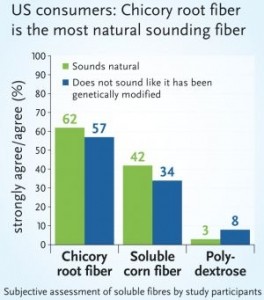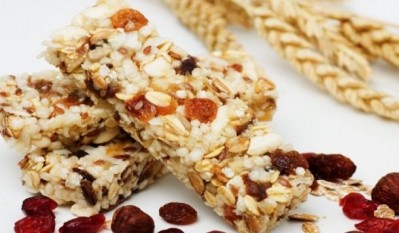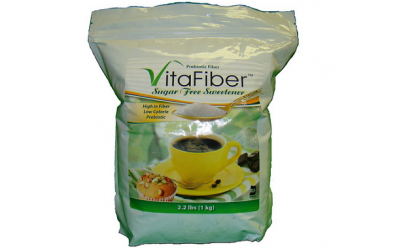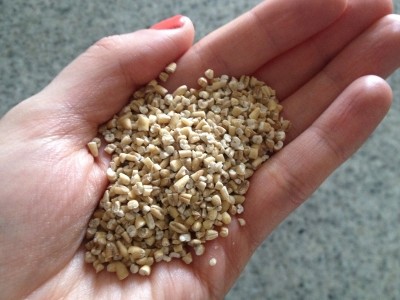The GMO factor is beginning to impact fiber choices, says Beneo

Beneo Inc president Joe O'Neill told FoodNavigator-USA that a 2014 survey of 1,000 US consumers by Health Focus International had shown that shoppers are significantly more likely to regard chicory root fiber as ‘natural’ and not genetically engineered than soluble corn fiber or polydextrose.
“62% of respondents saw chicory root fiber as a natural fiber. In contrast, only 42% and 3% of consumers, respectively, perceive soluble corn fiber and polydextrose as natural fibers," he said.
The GMO issue is also coming up a lot more in supplier questionnaires
He added: “It’s been brought to our attention by customers that one of the reasons they are using chicory root fiber is because it’s non-GMO. The same applies to starches – people are asking, 'Are they non-GMO? Because my guidelines are for non-GMO ingredients.' The GMO issue is also coming up a lot more in supplier questionnaires.
“It’s like an umbrella effect, all-natural, non-GMO, people want things that sound more natural and wholesome, so we stress that our inulin is a hot water extract, it’s not chemically modified, it’s seen as a ‘clean’ fiber’.”
As for oligofructose (a functional fiber produced via the enzymatic hydrolysis of inulin), while a plaintiff’s attorney in California may query whether its production process is ‘natural’, Beneo uses “non-GMO enzymes from natural products” to chop up the inulin into smaller bits, stressed O’Neill.
The fiber gap
But what about fiber more generally? We all know that Americans are not getting enough, but do they realize and do they care?
Yes and yes, insisted O’Neill. “In the last several years there’s been a growing realization by consumers and major food companies that there is a shortage of fiber in the US diet, commonly referred to as the fiber gap.
“The survey showed that 93% of consumers believe fiber is good for overall health, 91% believe fiber is beneficial for intestinal health and 68% say fiber helps you feel fuller for longer.”
As for categories where consumers are most likely to be looking for products with digestive health benefits, breakfast cereals, cereal bars, bread and yogurt were the most popular choices, he said.
The messaging has changed from being about getting enough ‘roughage’ to being part of a healthy active lifestyle
And while it can still be a difficult conversation, he said, brands and consumers are also getting more comfortable talking about digestive health, in part due to the development of brands such as Activia and the growing interest in probiotics, he said.
“The conversation around fiber is also changing. The messaging has changed from being about getting enough ‘roughage’ for regular bowel movements, to just being part of a healthy active lifestyle.”
As you can add soluble fibers such as inulin to almost anything from gummies, ice cream and infant formula to bread, yogurt, cereals and cereal bars without compromising taste or mouth feel, added O’Neill (“inulin is often referred to as the invisible fiber”), people are no longer having to compromise on taste or texture in order to get fiber into their diets.
Fiber and protein are often promoted together in snacks and cereals
As for whether fiber is an ‘on-trend’ ingredient, while protein might be the talk of the town right now, it is often paired up with fiber, especially in snacks, cereals and meal replacements, where grams of fiber are increasingly highlighted on the front of pack along with protein, he said.
There is also growing awareness that fiber and protein in combination are satiating, which works well in snacks and weight management products, he said, while “higher fiber products for children are also a big opportunity.”
Looking at on-pack claims adopted by manufacturers using inulin or oligofructose, meanwhile, it varies by application and by customer, he added.
In an ice cream, for instance, inulin is often used as a fat replacer (it mimics the mouthfeel of fat), and manufacturers using it are unlikely to make fiber claims on pack. In a cereal or snack bar, however, they are far more likely to promote fiber grams, or make a good source or excellent source of fiber claim.

Other health benefits of chicory root fibers – for example, they can boost bone mineral density by increasing calcium absorption; and also have prebiotic effects by stimulating the growth of ‘good’ bacteria in the gut – are less likely to be actively promoted on the front of pack, but this will change in future as awareness grows, he said.
“In other markets outside the US many of the leading companies talk about prebiotic effects and immune defenses [when they use chicory root fiber].
"And in the US, while some consumers are confused about the difference between pre- and probiotics, I think we're on the cutting edge of a new wave around fiber, prebiotics and digestive health. People already get it in supplements, and it's only a matter of time before this moves into mainstream foods."
Sugar reduction back at the top of mind for formulators
But one of the biggest opportunities for chicory root fiber right now is in sugar reduction, given its high solubility and natural sweetness, said O’Neill, noting that inulin and oligofructose have 1.5kcals/gram compared with 4kcal/g for sugar.
While reducing sugar is hardly a new trend, he acknowledged, it’s top of mind for many formulators right now as the FDA is proposing that manufacturers list added sugars on the Nutrition Facts panel, new WHO guidance on sugars has had a lot of media coverage, and the US Dietary Guidelines Advisory Committee recently homed in on reducing added sugar, he said.
"It's sugar out and fiber in."
















